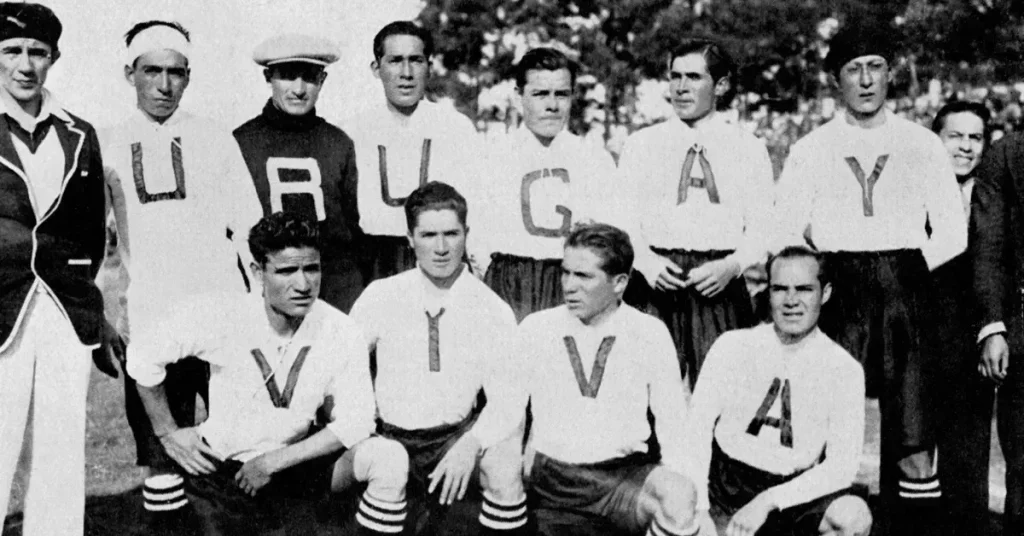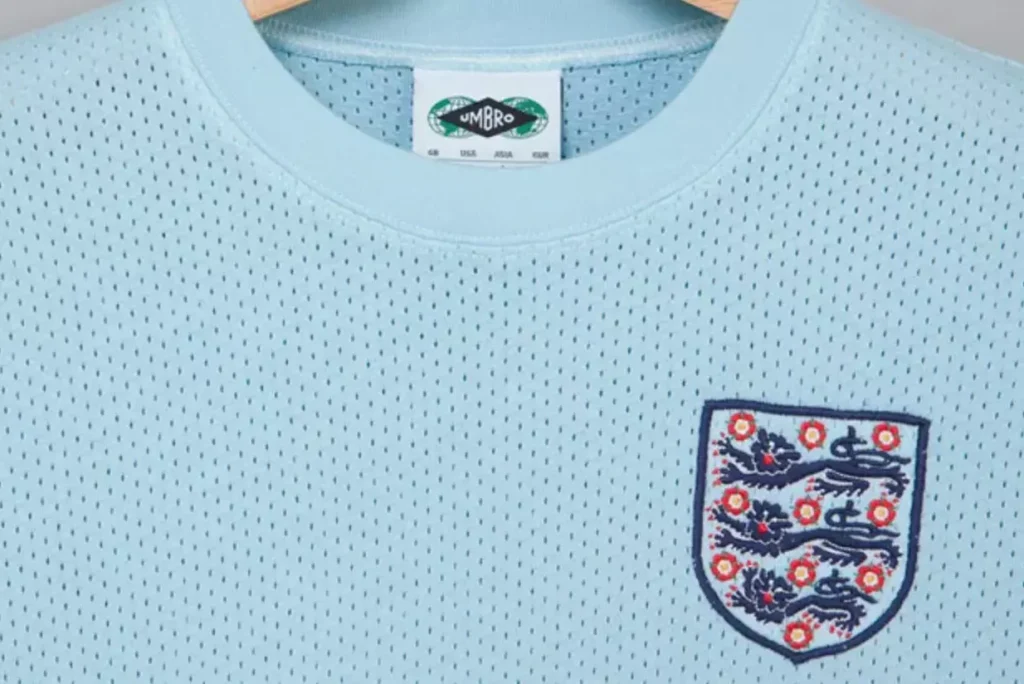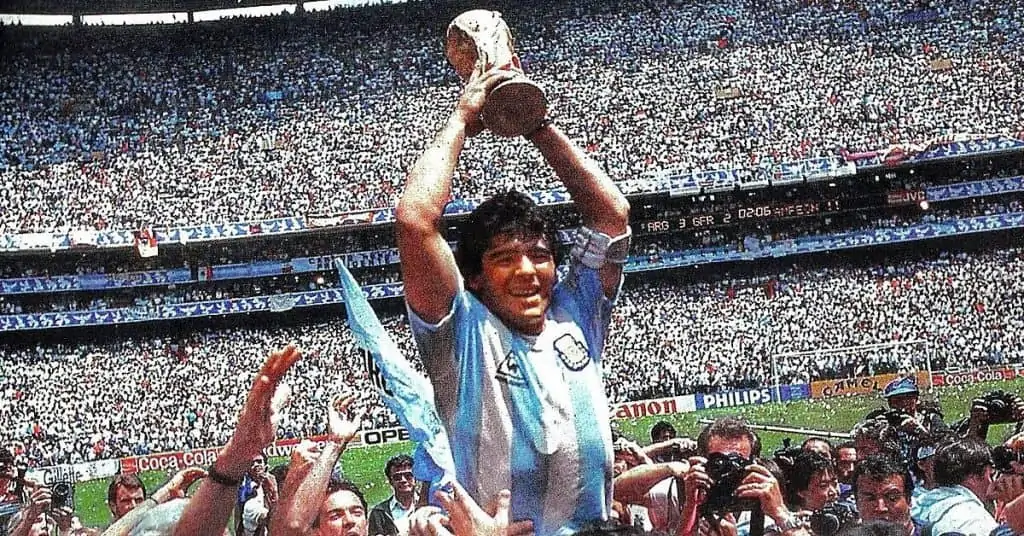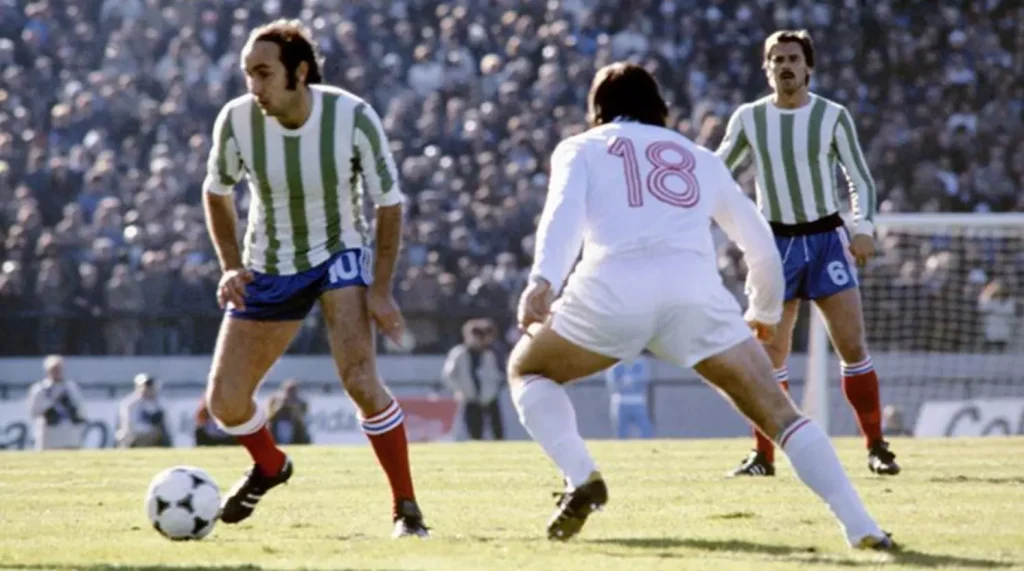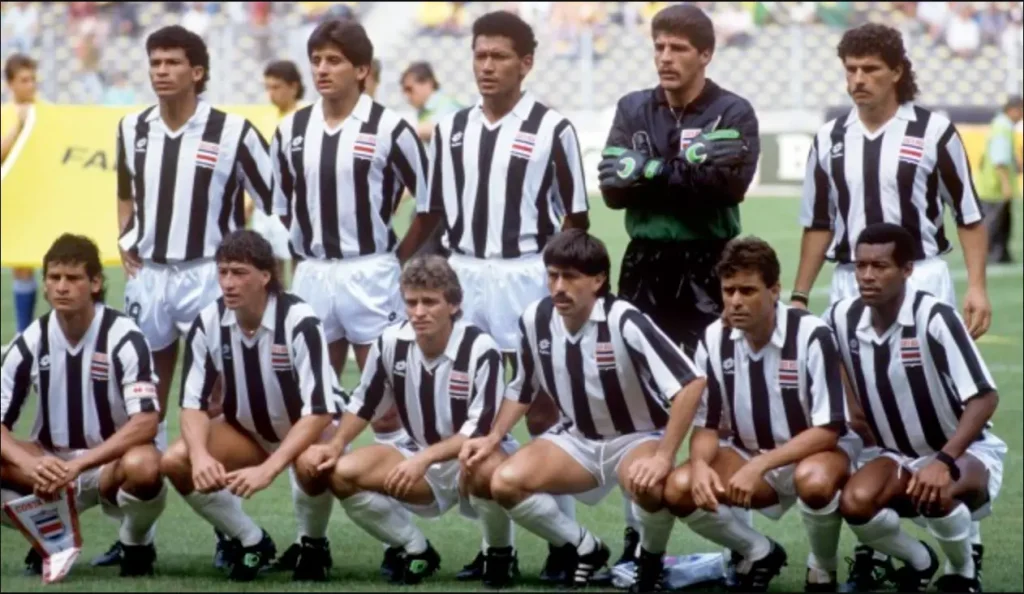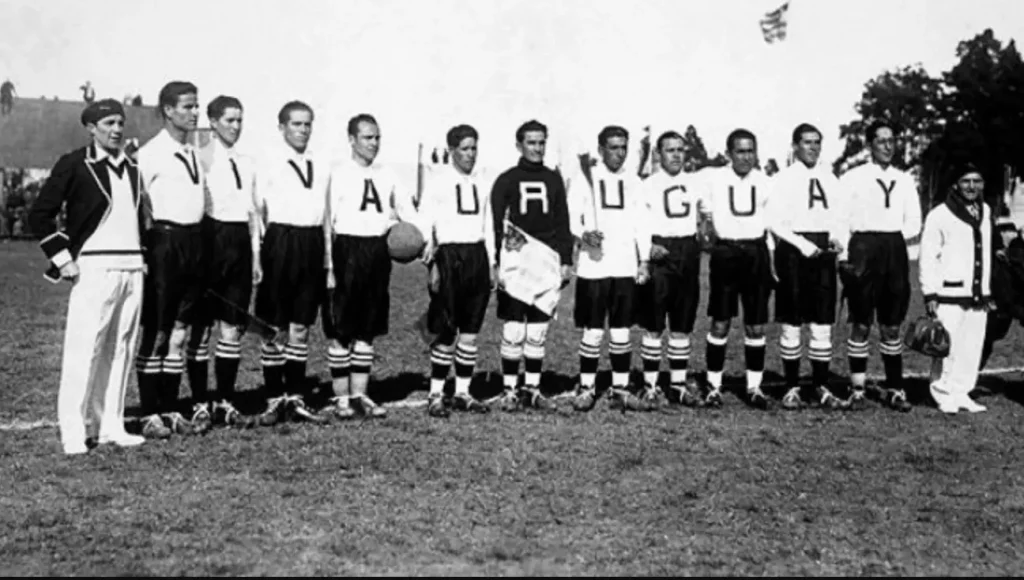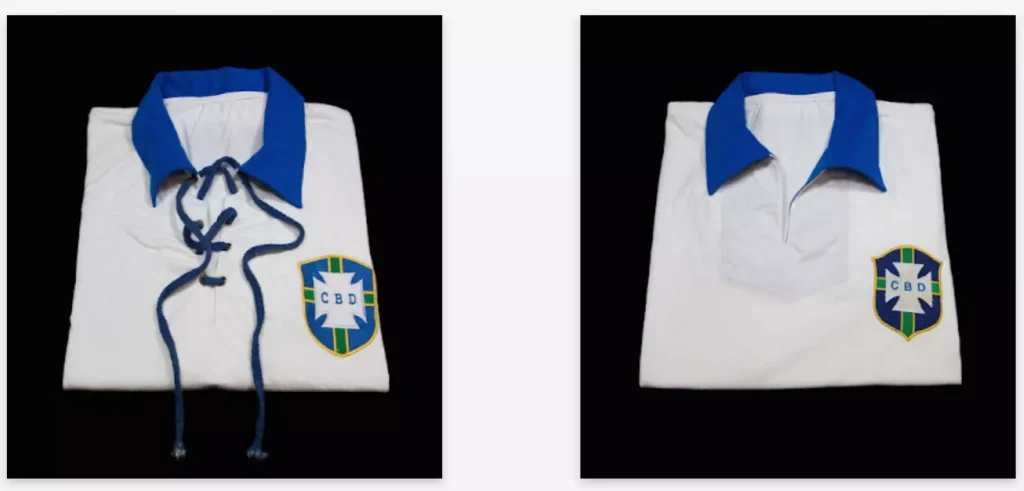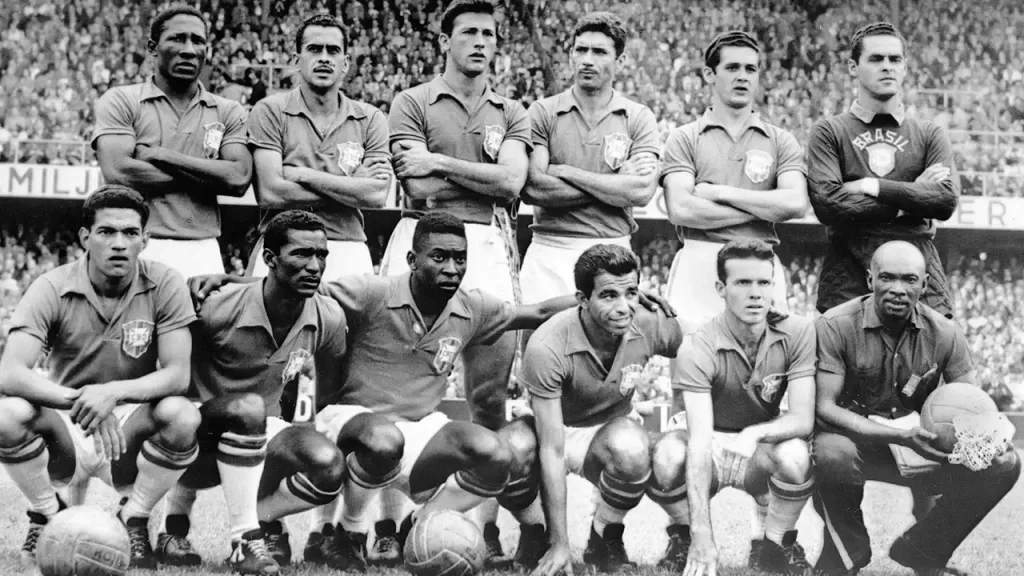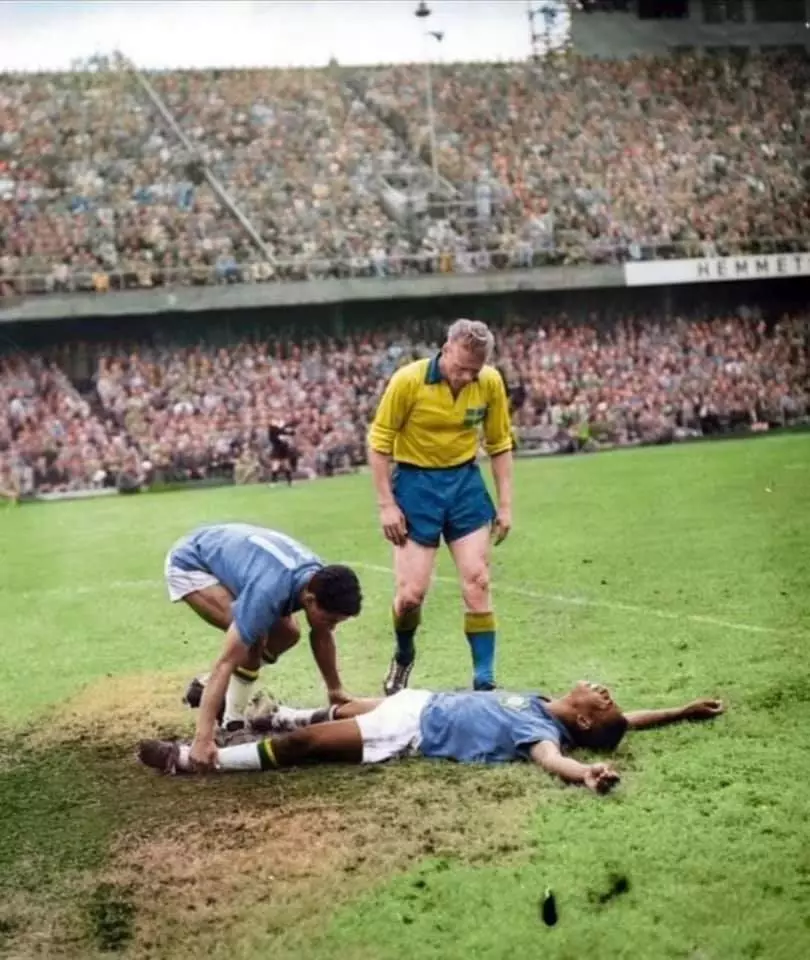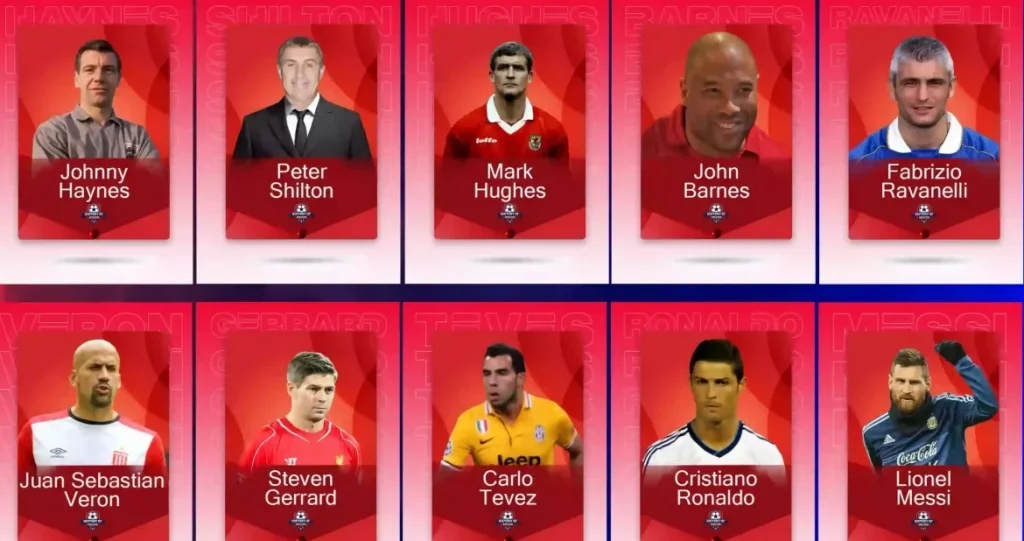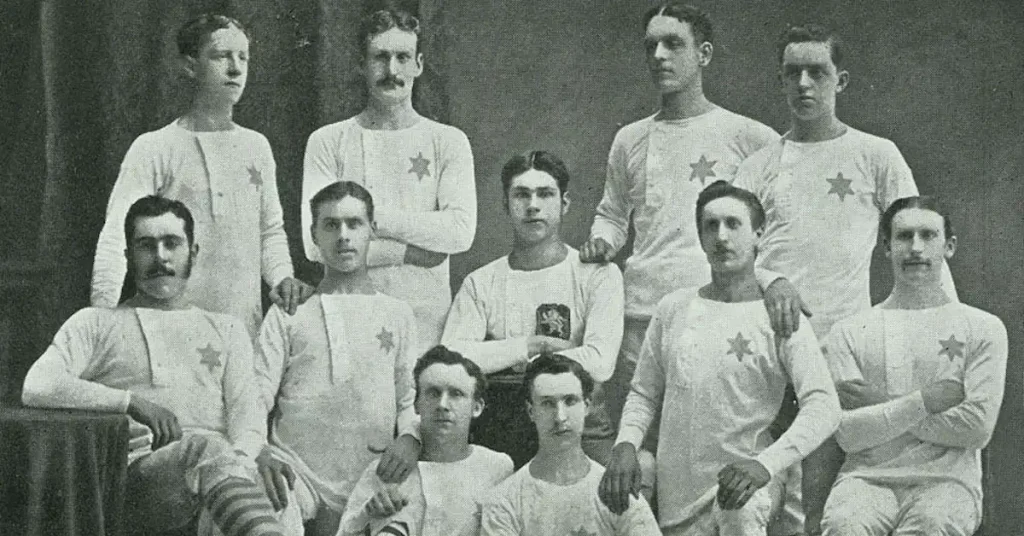One of the FIFA World Cup’s classics is the expectation of what the World Cup jerseys of the selected participants will be like.
But before the tailoring was studied to the millimeter, some stories were as curious as they were beautiful, as we remind you.
What Kills Is The Humidity
Mexico organized the World Cups in 1970 and 1986, and national teams were concerned about how the heat and humidity would affect the players.
The World Cup jerseys had to help wick away sweat. For this reason, England used in 1970, some made with a lighter fabric and holes, the Air-Tech, at the request of the delegation’s doctor, Neil Phillips.
But the English went further. As light colors absorb heat better, they decided that the red shirt with which they won their World Cup in 1966 would be the third kit. So the first World Cup jersey was entirely white.
The second, never seen before: all light blue, pants and stockings included. So they went out to play against Czechoslovakia, dressed very similarly, in white. Despite the 1-0 victory, it was a mistake.
“I think my choice of light blue, the second color, was bad. Where I was sitting, looking out of the shadows into the sun, it was challenging to tell the players apart,” admitted Alf Ramsey, the England manager.
Television also complained because of the resemblance – most viewers saw the images in black and white, the contrast was minimal – and against Germany, they used red. Not only was it scorching, but there was also extra time. As a result, England lost 3-2 and was eliminated.
Argentina 1986 World Cup Jersey
In 1986 Argentina also wore Air-Tech World Cup jerseys, only the starter, light blue and white.
Against Uruguay, in the round of 16, he played with a blue cotton one, and Carlos Bilardo was worried: against England in the quarterfinals, at noon in the Federal District, they couldn’t play with that armor.
The technician asked the brand that dressed them at the time to make blue but light shirts.
Impossible with so little time. Three days before the game, he sent a collaborator to visit stores in the Mexican capital.
Rubén Moschella returned with two blue models. They weighed them but could not decide. When Diego Maradona appeared: “This shirt is so cute. With this, we beat England”.
Moschella returned to the store and bought 38 of the captain’s chosen jerseys.
A designer urgently sketched the AFA shield, some embroiderers sewed it on each garment, and silver American football numbers were hastily ironed on the back.
Hours later, Maradona made history. With the hand of God, with one of the best World Cup goals and wearing a World Cup jersey bought urgently in a forgotten store in Mexico City.
Some Bleus Verdiblancos
It is June 10, 1978, and France and Hungary are preparing to play their last match in the World Cup in Mar del Plata, Argentina after being eliminated from Group 1.
There is half an hour to go before the start, and Henri Michel calls them to pay attention to what they see under the coat of the Hungarians.
“White jersey?” the Nantes captain asked András Torocsik. “White jersey,” replied the striker.
Then Michel explained that France was playing in white. But Torocsik swore to him that Hungary was playing in white. And what was a curiosity became a problem to be resolved urgently.
Each directive assured that they had a circular from FIFA informing them that they should play in white. So they argued until Henri Patrelle, manager of the French team, paled: “I am the only one responsible.
I never read the second circular, which modified the first.” France was supposed to change their World cup jersey but didn’t have any. Their blue jersey was 400 kilometers away in Buenos Aires.
With the crowd whistling at the delay, a police car blared out of the stadium and drove to the Kimberley Athletic Club.
Yes, France played and won 3-1 wearing the green and white jersey with sticks of one of the traditional Mar del Plata clubs.
Like any team at the time, Kimberley had only jerseys numbered 1 to 16. Dominique Rocheteau scored a goal wearing the number 18 on his blue shorts but with the seven on the back.
In the history of the World Cups, there were other cases in which a team had to wear club jerseys due to the similarity of colors. For example, Mexico played against Switzerland in Brazil in 1950 with the blue and white vertical stripes of the Cruzeiro.
Eight years later, Argentina opened Sweden 1958 against West Germany wearing the yellow of IFK Malmoe.
La Vecchia Costa Rica
Italy 1990 is unforgettable for Costa Rica. It was their first participation in a final knockout phase, and surprisingly, they reached the round of 16.
After beating Scotland in their debut wearing a red World Cup jersey with a white collar, it was the turn of Careca and Alemão’s Brazil.
There was no chromatic reason to change clothes, but he jumped to the Turin Comunale with an unprecedented black and white jersey.
The Costa Rican Federation took it to Italy as a tribute to the country’s oldest club, CS Libertad, then defunct. But using it that day had an intention behind it.
“Bora suggested playing with that because of Juve,” Alexandre Guimarães, a player for that team, recalled. Bora is Milutinovic, a Costa Rican coach in that World Cup.
The Serbian wanted the Turinese to identify with his team for playing as Juventus. But the mischief did not work: “The task was not achieved because Brazil fans took over the stadium.”
Costa Rica lost 1-0 but dressed again as Vecchia Signora four days later: they beat Sweden 2-1 and qualified.
Give Me A V!
In Uruguay 1930, Bolivia starred in one of the most curious events of all time.
In their debut against Yugoslavia, the Bolivian players entered the field wearing a white World Cup jersey, each with a letter on their chest.
When standing in front of the photographers, the mystery was revealed: among the 11, and they formed the phrase Viva Uruguay.
That’s how they played and lost 4-0, but against Brazil, they couldn’t repeat the gesture: as the Brazilians also had white jerseys, Bolivia played with a set of light blue ones on loan from the hosts.
A Green And Blue Talisman Brazil Played In
Wearing white jerseys from 1914 to 1950, when the Correio da Manhã newspaper pointed out the light shirts with blue collars as cursed after the Maracanazo.
The newspaper decided that this could not continue and organized, together with the Brazilian Sports Confederation (CBD), a contest in which the basis was non-negotiable: the outfit had to combine the colors of the Brazilian flag.
It was won by an 18-year-old writer and illustrator from Rio de Janeiro, Aldyr García Schlee, who imagined the most famous uniform on the planet: a yellow jersey, green trim, blue shorts, and white socks.
The Seleçao premiered it at the World Cup in Switzerland in 1954 against Mexico. They thrashed 5-0, and perhaps it was an omen.
Brazil won five titles dressed as García Schlee imagined, although Sweden in 1958 had its peculiarity. The Swedes already used yellow as their starting color for the World Cup final.
There was a draw, the Europeans won it, and Brazil had to change. White again? No kidding.
Two days before the game, the Brazilian delegation bought a set of blue World Cup jerseys in a store in Stockholm, the color of Our Lady of Aparecida, the patron saint of Brazil.
They removed the original shields, sewed up the CBD ones, and went out to play.
Pelé and Garrincha did their magic, and Brazil won 5-2. It was his first world title and the beginning of another tradition: since then, the Brazilian substitute jersey is always blue.
